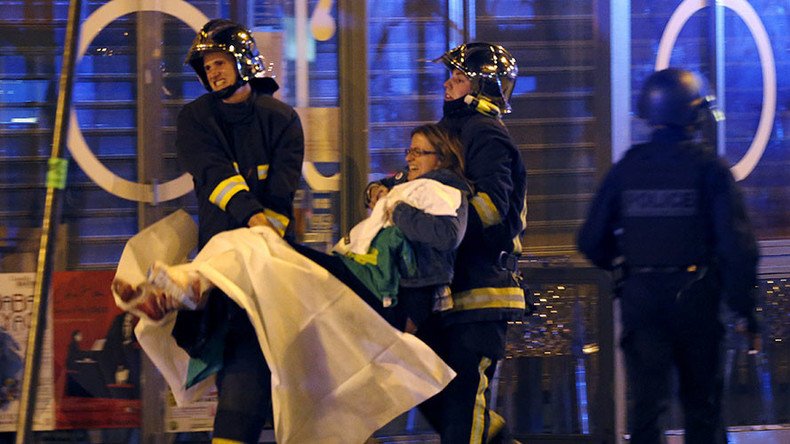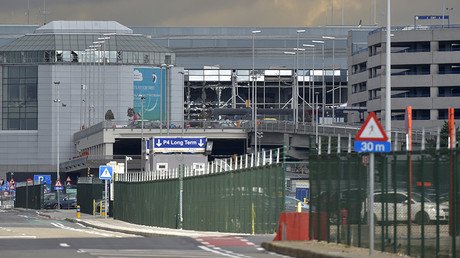ISIS planned more attacks across Europe after Paris massacre of November 2015 - reports

The scale of the November 2015 attacks in France could have been much worse, as Islamic State (IS, formerly ISIS/ISIL) terrorists had planned more attacks in Europe, CNN reported, citing thousands of pages of newly-obtained European intelligence.
About 90,000 pages containing documents and photos from European investigations were disclosed to the American channel by sources linked to the Paris attacks probe.
In particular, they showed that other attacks had been planned for Europe, and that the Paris massacre was just a “small-scale” version of what was to take place later. A top European counter-terrorism official told CNN that other locations included sites in the Netherlands, as well as more French targets, including shopping centers and a supermarket. The official observed that IS had also seemingly taken steps to infiltrate the UK in order to carry out attacks there as well.
CNN reportage suggests ISIS planned more targets during Paris attacks @CNNPoliticshttps://t.co/rgzAsORcHg
— Alessandro Bonzio (@A_Bonzio) 6 сентября 2016 г.
Security services are “uncovering more and more ISIS operatives” in Europe, the official said.
Terrorists extensively use social messengers such as Viber, Whatsapp, and Telegram, mainly because they allow for encrypted communication, which data pulled from their cellphones has shown. One of the apps even allows users to pick a phone number that can throw any intelligence service off their trail. On top of encryption, senior commanders in Syria only give their agents in Europe enough information and money to proceed to the next step.
The documents reveal the route of four IS terrorists who left Raqqa, Syria last year, apparently intending to enter France posing as refugees.
Two of the four, Ahmad al-Mohammad and Mohamad al-Mahmod, did reach France and blew themselves up at a Paris stadium in November of 2015. Two other terrorists, who were identified in CNN’s report as Algerian-born Adel Haddadi and Pakistani Muhammad Usman, were arrested in Austria after those attacks.
ISIS leaders planned Europe strikes beyond Paris, worse carnage, CNN investigation reveals https://t.co/M2YZtlyjSDpic.twitter.com/YnxopiubAn
— CNN Politics (@CNNPolitics) September 6, 2016
Their entire operation had seemingly been coordinated by IS leader Abu Ahmad, who took care of logistics and provided the terrorists with cell phones, fake Syrian passports, and money. Their conversations were mostly carried out in code, according to CNN.
“Abu Ahmad… is key in sending those individuals, at least the foreigners, into the Paris attacks,” said Jean-Charles Brisard, president and chairman of the French Center for the Analysis of Terrorism, who reviewed the documents for CNN. “He is the one who recruited them, who funds them, who trained them. He was always in contact with them.”
The four terrorists didn’t know each other’s real names or what their final mission or target would be. Haddadi later told the investigation that they were to do something “for the good of God.”
Haddadi and Usman were detaining in Greece for having fake passports, but were released six weeks later and allowed to enter Europe in late October, when they continued on their journey along the usual refugee route. Arriving in Salzburg the day after the Paris attacks, the pair applied for asylum and lived at a refugee center for several weeks, during which they seemed to be waiting for some kind of sign directing them to commence an operation. However, they were arrested by Austrian security services in December, apparently before it came.
According to the report, Haddadi and Usman may have been waiting for another suspected terrorist, identified by CNN as Moroccan national Abid Tabaouni, who is also said to have travelled from Syria to Salzburg along the refugee route, arriving in December.
Tabaouni was reportedly expected to launch a follow-up attack with Haddadi and Usman. His cellphone contact list contained a number linked to the terror cell of Abdelhamid Abaaoud, the mastermind behind the Paris attacks.
“We can assume that Tabaouni was also part of the same plot. And was instructed to carry out an attack,” Brisard told CNN.
Tabaouni was detained in Brussels and now faces extradition to Austria, the channel said. Haddadi and Usman face terrorism charges in France after extradition.
A total of 130 people were killed and 368 injured in coordinated terror attacks in Paris and Saint-Denis, a northern Parisian suburb, in November of 2015. At that time, three suicide bombers blew themselves up during a football match outside the Stade de France just before several mass shootings and another suicide bombing were launched. Hostages were also taken at a rock concert in the Bataclan theatre, leading to a standoff with police. The attacks were France’s deadliest since World War II.













